The Northwest Territories is home to an amazing variety of birds. With its wide variety of habitats, ranging from boreal forest to arctic tundra, the Northwest Territories is a paradise for birdwatchers.
From the majestic Bald Eagle to the colorful Spruce Grouse, the Northwest Territories has something for everyone. Birdwatchers can find a variety of species, including waterfowl, passerines, shorebirds, and seabirds.
The Northwest Territories is also home to a number of rare and threatened species, including the Greater Sage-Grouse, the Trumpeter Swan, and the Yellow Rail. With its wide variety of bird species, the Northwest Territories is a great place for birdwatchers to explore.
1. Motacillidae
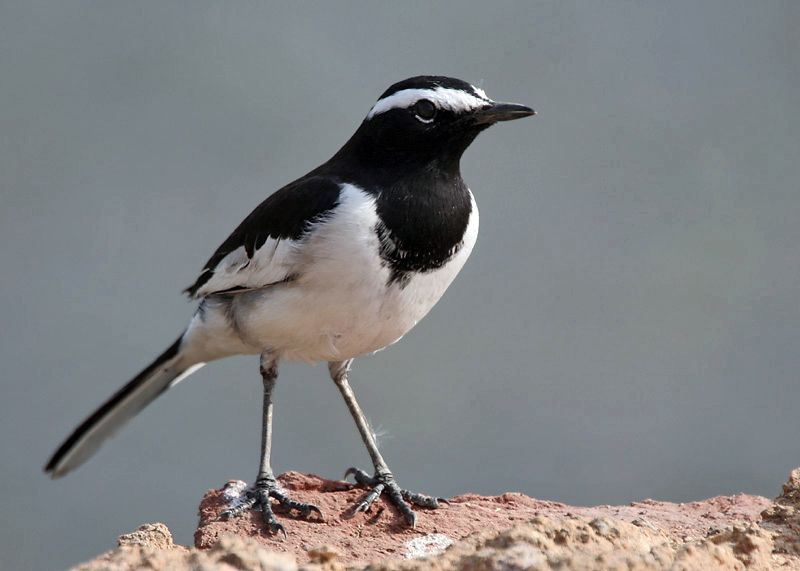
The Motacillidae family of birds consists of small passerines with medium to long tails. This family is made up of three distinct types of birds: wagtails, longclaws, and pipits. There are a total of 70 species found in five genera.
Wagtails are known for their distinctive wagging tail. Longclaws are characterized by their yellow legs and long claws which they use to feed on insects.
Lastly, pipits are small brown birds that typically forage on the ground for small seeds and insects. The Motacillidae family is found all around the world, from North and South America to Europe, Asia, and Africa.
These birds generally inhabit open grasslands, marshes, and other similar environments. They are ground-dwelling birds that feed on a variety of invertebrates and small seeds. In addition to their distinct physical characteristics, these birds have unique family behavior.
They are highly social and often form large flocks in order to search for food and protect themselves from predators. The wagtails, longclaws, and pipits of the Motacillidae family are an integral part of many grassland and marsh ecosystems.
They not only provide food for other animals but also help to keep insect populations in check and disperse seeds.
| Kingdom | Animalia |
| Phylum | Chordata |
| Class | Aves |
| Order | Passeriformes |
| Family | Motacillidae |
2. Treecreepers

Source: Wikipedia
The treecreepers are a family of small passerine birds that occur in wooded areas across the Northern Hemisphere and sub-Saharan Africa. They are part of the Certhiidae family and are made up of two genera, Certhia and Salpornis.
There are eleven species in total which are all found in these two genera. They are typically small birds with short and rounded wings, strong legs, and a long tail. They have a thin bill that is used to probe bark for insects and spiders.
Treecreepers often climb up tree trunks to search for food, using their feet against the bark to move up the trunk. They are usually found in pairs or small groups and often associate with other birds such as woodpeckers.
They are also known to be quite vocal, often producing a variety of calls and chirps. Treecreepers are an important part of the ecosystem, helping to control insect populations and dispersing seeds.
They are also a popular species with birdwatchers and photographers as they are quite attractive and can be quite inquisitive.
| Kingdom | Animalia |
| Phylum | Chordata |
| Class | Aves |
| Order | Passeriformes |
| Family | Certhiidae |
3. Mimid
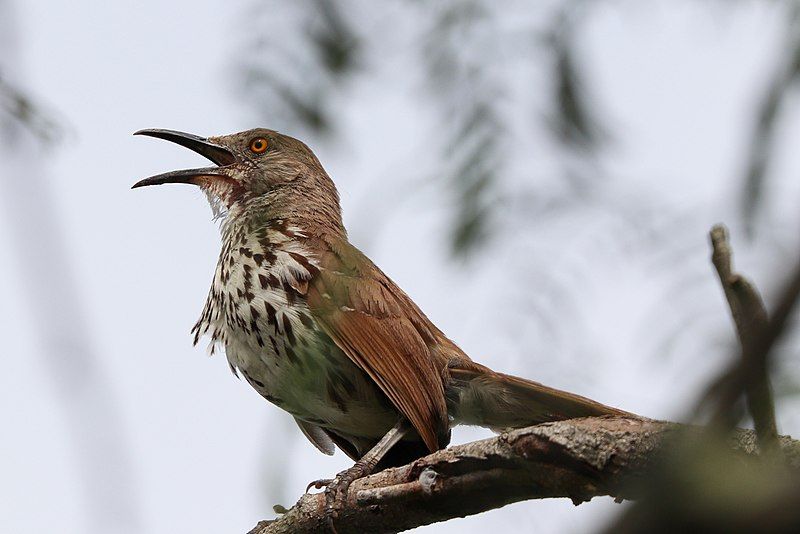
The Mimidae family of passerine birds, otherwise known as the mimids, is a large group of birds native to the New World. This family includes some of the most recognizable songbirds, such as thrashers, mockingbirds, and catbirds.
Thrashers are known for their remarkable ability to mimic other bird songs, while mockingbirds are known for their long, complex songs. Tremblers are so-called due to their habit of flicking their wings and tails while singing.
The New World catbirds are named for their unique vocalization that resembles a cat’s meow. All of these birds are found throughout the Americas, from the Arctic tundra to the tropical rainforests.
They are highly adaptable, living in a variety of habitats including urban and suburban areas. Their beautiful songs and stunning plumage make them a favorite of birdwatchers and backyard birders alike.
| Kingdom | Animalia |
| Phylum | Chordata |
| Class | Aves |
| Order | Passeriformes |
| Family | Mimidae |
4. Procellariidae

The Procellariidae family is an order of seabirds that includes five distinct groups: fulmarine petrels, gadfly petrels, diving petrels, prions, and shearwaters. These seabirds are all part of the Procellariiformes order, which also includes albatrosses and storm petrels.
All of the birds in this family have unique adaptations that allow them to thrive in a marine environment. Fulmarine petrels, also known as fulmars, are small seabirds that breed in the northern hemisphere.
They have a wide wingspan and feed by plunging into the ocean and picking up small fish and invertebrates.
They have a hooked beak that helps them to catch their prey and also a special gland near their eyes which secretes a thick oil that helps to keep their feathers waterproof.
Gadfly petrels, also known as gadflys, are a group of medium-sized seabirds that breed in the southern hemisphere. They feed on fish, squid, and other marine animals by skimming the surface of the ocean and snatching their prey.
They have a unique hooked beak and small, round eyes which help them to search for food. Diving petrels are small, stocky seabirds that breed in the southern hemisphere.
They have strong wings and short, powerful legs that allow them to dive deep into the water in search of food. They feed on tiny crustaceans and other small marine animals. Prions are small seabirds that breed in the southern hemisphere.
They have a wide wingspan and feed by skimming the surface of the ocean and snatching small fish and invertebrates.
They have a hooked beak which helps them to catch their prey and also a special gland near their eyes which secretes a thick oil that helps to keep their feathers waterproof. Shearwaters are medium-sized seabirds that breed in the northern hemisphere.
They feed on squid, fish, and other marine animals by skimming the surface of the ocean and snatching their prey. They have a hooked beak and powerful, long wings which allow them to fly over long distances.
All of these birds are well adapted to life at sea and play an important role in maintaining a healthy marine ecosystem.
| Kingdom | Animalia |
| Phylum | Chordata |
| Class | Aves |
| Order | Procellariiformes |
| Family | Procellariidae |
5. Old-World Flycatchers
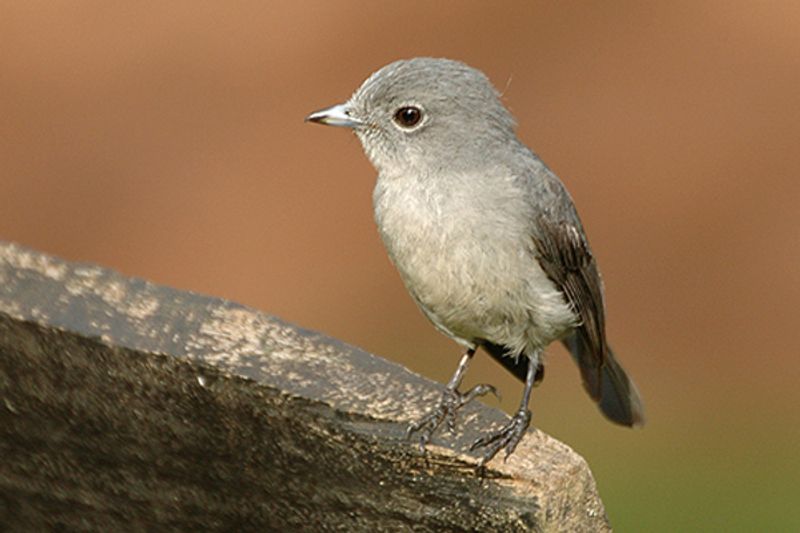
The Muscicapidae family, known as the Old World flycatchers, is made up of small passerine birds that are native to the Old World. This family includes a variety of species, but there are two species that are worth noting; the bluethroat and the northern wheatear.
These two species are unique in that they are not only found in the Old World, but they also have been seen in North America as vagrants. This means that they are not normally found in the region, but they occasionally wander into the area.
The Old World flycatchers are generally small birds with short bills and long wings, which allow them to be agile in the air. They often feed on flying insects while in flight, and their diet can vary based on the season and the species.
Overall, the Old World flycatcher family is a diverse group of birds that have adapted to various climates and habitats. While they are primarily found in the Old World, two of its species have been seen in North America as vagrants.
Their small size and ability to fly quickly make them a unique and interesting family of birds.
| Kingdom | Animalia |
| Phylum | Chordata |
| Class | Aves |
| Order | Passeriformes |
| Family | Muscicapidae |
6. Plovers
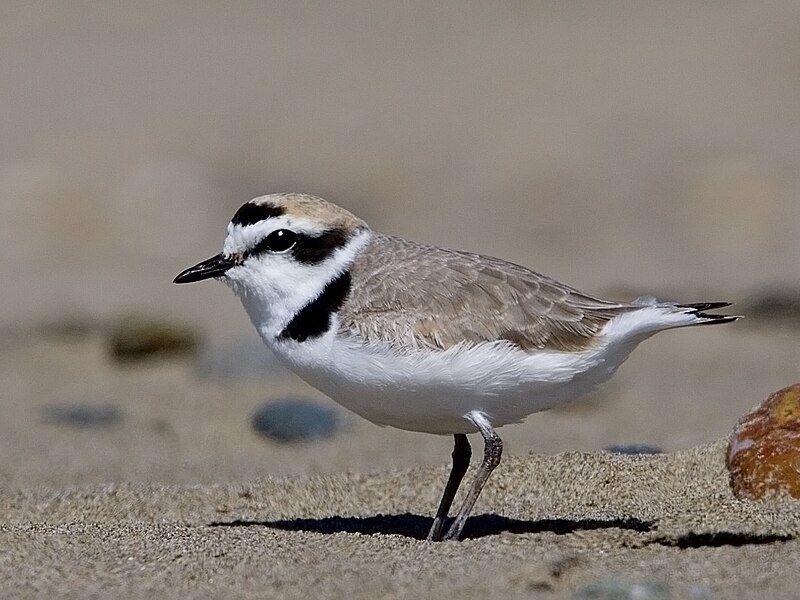
The bird family Charadriidae is a large family of birds that includes the plovers, dotterels, and lapwings. This family is made up of 69 species which are divided into 10 different genera. Plovers are usually found near water and have a slightly rounded head.
Dotterels are small, long-legged shorebirds that can be identified by their brown and white stripes. Lapwings are large wading birds that are distinguishable by their black and white wings.
All three of these species are found in the Charadriidae family, which is one of the largest bird families in the world. Each species within the Charadriidae family has different characteristics and behaviors, but they all share the same family name.
| Kingdom | Animalia |
| Phylum | Chordata |
| Class | Aves |
| Order | Charadriiformes |
| Family | Charadriidae |
7. Tyrant Flycatchers

The tyrant flycatchers are a family of passerine birds that are distributed throughout North and South America. They are believed to be the largest family of birds in the world, with over 400 different species.
The majority of these species are native to the Americas, however, some have been introduced to other parts of the world. The tyrant flycatcher family is known for its wide array of colors and sizes, which range from tiny to large.
These birds have a distinctive appearance with their long, pointed bills and strong legs.
They are known for their strong song, which can range from melodious trills to harsh screams. Tyrant flycatchers are omnivorous and will eat a variety of foods, such as insects, fruits, nectar, and small vertebrates. They are often seen foraging for food in small flocks or alone.
They are also known to be aggressive towards other birds that come too close to their nests. In addition to their large size and wide array of colors, tyrant flycatchers are also known for their intelligence.
They are able to recognize their own species by their calls and make calls that are unique to their own species.
They are also able to recognize the calls of other bird species and will often respond to them. The tyrant flycatcher family is an important part of the avian community, with their large numbers, unique appearance, and versatile diet.
They are an integral part of ecosystems throughout the Americas and are a valuable asset to the conservation of our planet.
| Kingdom | Animalia |
| Phylum | Chordata |
| Class | Aves |
| Order | Passeriformes |
| Family | Tyrannidae |
8. Sulids
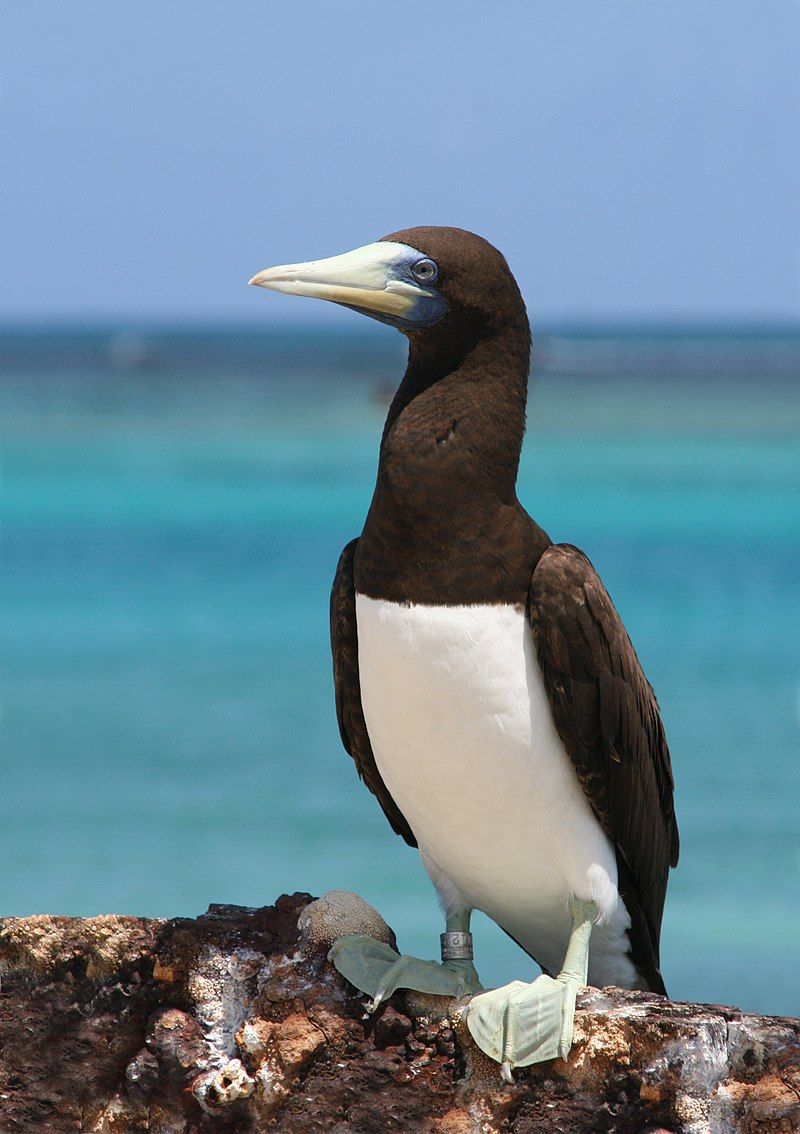
The bird family Sulidae is a group of medium-large seabirds that includes the gannets and boobies. Commonly known as sulids, these birds are typically found near coastal regions and feed on fish and other aquatic prey by diving into the water.
There are a total of 10 species in the Sulidae family, which was historically treated as a single genus, Sula, in older sources. Although some species exhibit distinct features, the Sulidae family is generally considered to be closely related and part of the same genus.
The Sulidae family is made up of two distinct subfamilies, the gannets and the boobies. Gannets are large seabirds that can grow up to 3 feet in length and are characterized by their long, pointed beaks and white and black plumage.
Boobies, on the other hand, are smaller in size and are typically colored brown or gray. They feed primarily on small fish, squid, and crustaceans and are known for their agility and quick dives.
In addition to their unique physical characteristics, sulids have a number of other distinct traits. They are highly social birds and often travel in large flocks, even when foraging.
They also have a complex mating ritual that includes displays of synchronized diving and a unique courtship song. Sulids are also highly vocal and communicate with a variety of calls and songs.
The Sulidae family is an important part of the marine ecosystem and serves as an important food source for many other species. They are also an important part of the tourism industry, as they are often seen by visitors to coastal regions.
As such, their conservation is of great importance.
| Kingdom | Animalia |
| Phylum | Chordata |
| Class | Aves |
| Order | Suliformes |
| Family | Sulidae |
9. Cardinalidae
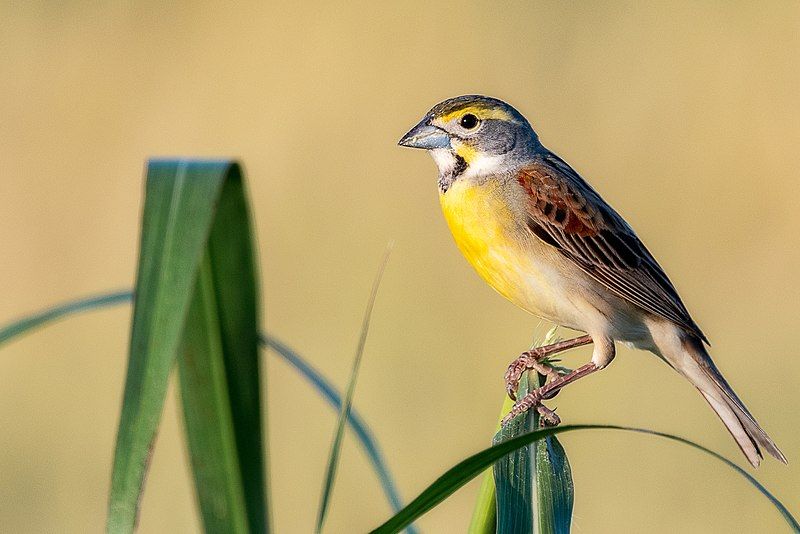
Cardinalidae is a family of birds native to the New World. This family includes cardinals, grosbeaks, and buntings, as well as several other genera such as the tanager-like Piranga and the warbler-like Granatellus.
Cardinals are recognizable by their bright red feathers and conical bills. Grosbeaks are a larger species of songbird with thick bills and typically drab plumage. Buntings are small, compact songbirds with a slender bill and often brightly colored feathers.
The Piranga genus has striking plumage and includes species such as the Scarlet Tanager and Summer Tanager. The Granatellus genus is composed of several species of warbler, such as the Blue-black Grassquit and the Black-throated Mango.
All of these birds are found in the New World and are part of the Cardinalidae family.
| Kingdom | Animalia |
| Phylum | Chordata |
| Class | Aves |
| Order | Passeriformes |
| Family | Cardinalidae |
10. Stilts and Avocets
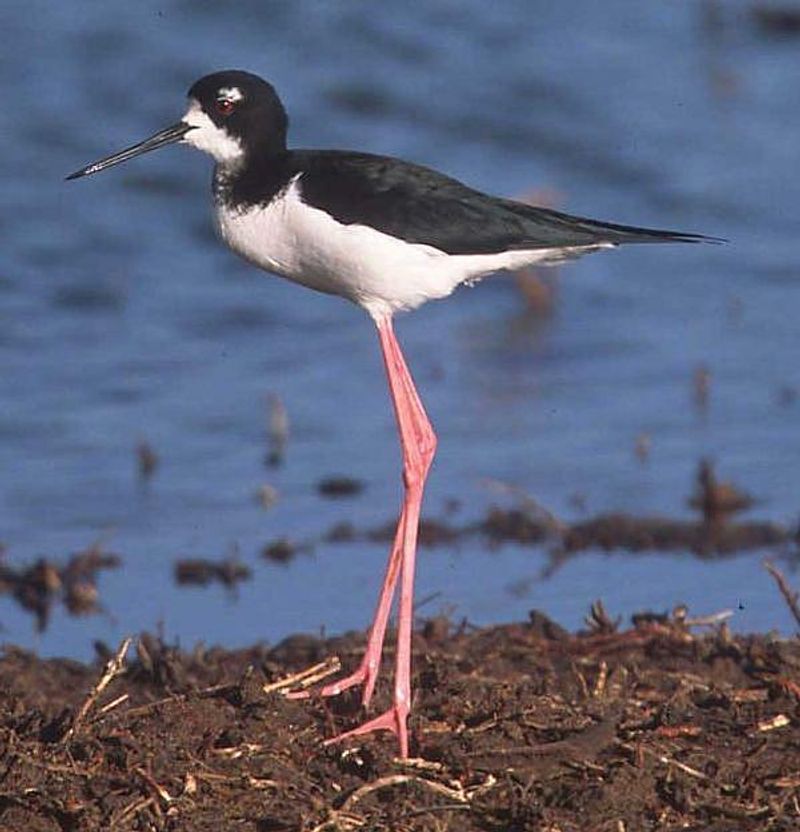
The Recurvirostridae family of birds is a part of the wader suborder Charadrii. This family is composed of two different bird groups, the avocets and the stilts. Avocets are long-legged wading birds with long and slender beaks that are curved upwards.
They have webbed feet and distinctive black and white plumage. Stilts, on the other hand, are also long-legged birds with long and thin beaks. They have a unique black-and-white pattern of feathers and their feet are much longer and narrower than avocets.
Both avocets and stilts can be found in a variety of habitats, including marshes, ponds, and estuaries. They are also migratory, traveling long distances to find food and a suitable place to breed.
The Recurvirostridae family is an important part of the wader suborder and plays an integral role in the food web.
| Kingdom | Animalia |
| Phylum | Chordata |
| Class | Aves |
| Order | Charadriiformes |
| Family | Recurvirostridae |
11. Hudsonian Godwit
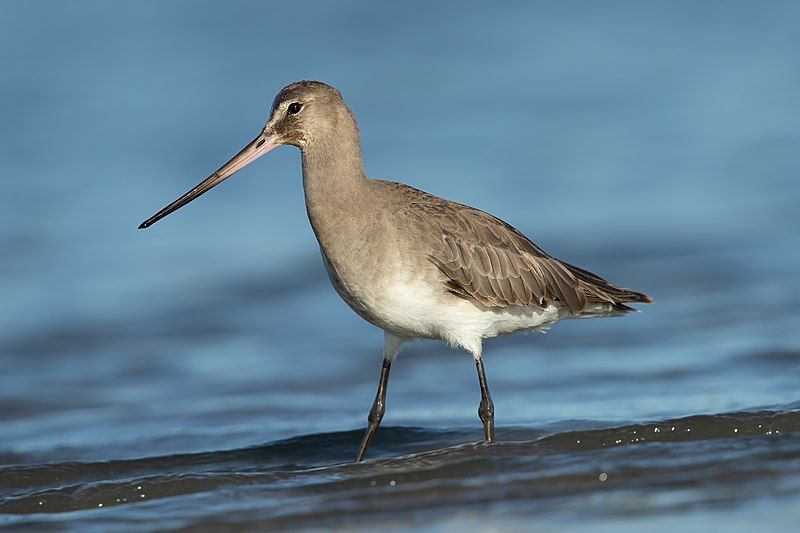
The Hudsonian godwit is a large species of shorebird that belongs to the sandpiper family, Scolopacidae. Its scientific name, Limosa haemastica, is derived from Latin and Ancient Greek language.
The genus name, Limosa, is from Latin and means “muddy”, derived from the word limus which means mud. The specific name, haemastica, is from Ancient Greek and translates to “bloody”.
This name is likely due to the bird’s reddish-brown breast, which is a characteristic feature of the species. In the 18th century, a popular common name for this bird was the red-breasted godwit.
| Kingdom | Animalia |
| Phylum | Chordata |
| Class | Aves |
| Order | Charadriiformes |
| Family | Scolopacidae |
| Genus | Limosa |
| Species | L. haemastica |
12. Solitary Sandpiper
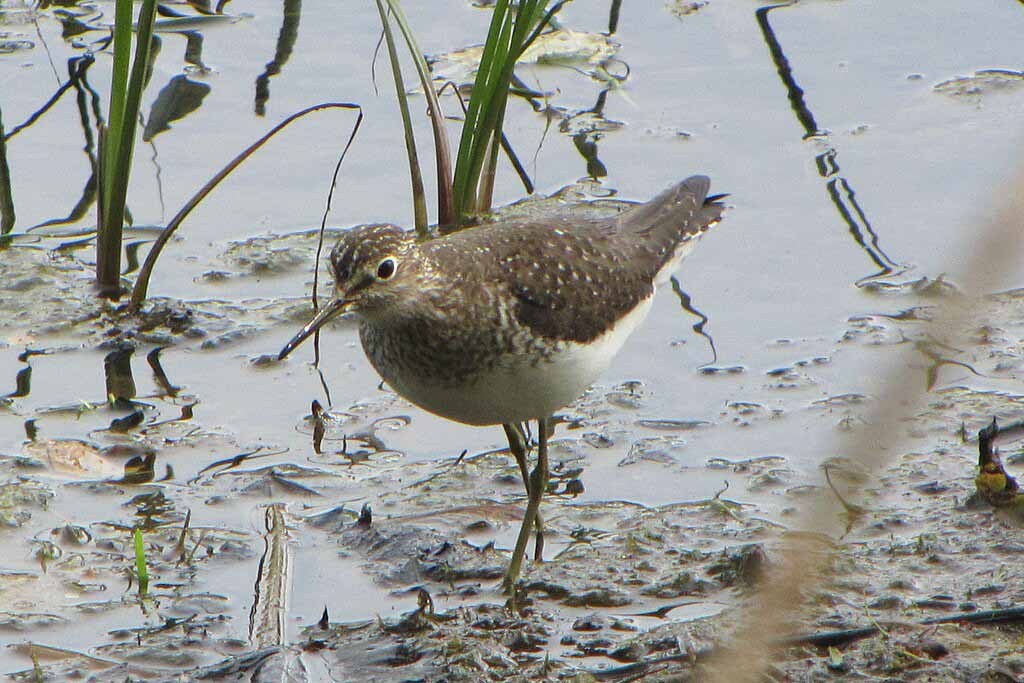
Source: Wikipedia
The solitary sandpiper is a small shorebird belonging to the genus Tringa. This genus name was assigned to the green sandpiper by Aldrovandus in 1599, and is derived from the Ancient Greek term “trungas”.
This term referred to a type of wading bird with a thrush-like size, white rump, and tail-bobbing behavior. The species name “solitaria” is of Latin origin, and translates to “solitary”, or “alone”.
This species’ name was chosen to reflect the sandpiper’s tendency to live a solitary life, foraging and flying alone.
| Kingdom | Animalia |
| Phylum | Chordata |
| Class | Aves |
| Order | Charadriiformes |
| Family | Scolopacidae |
| Genus | Tringa |
| Species | T. solitaria |
13. White-Rumped Sandpiper
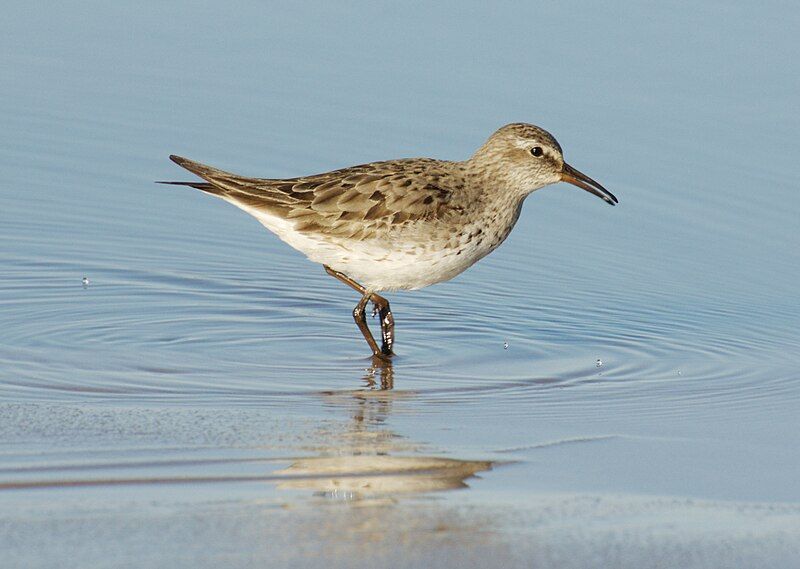
The white-rumped sandpiper is a small shorebird that breeds in the northern tundra of Canada and Alaska. This species is considered a “peep” or “stint” due to its size, which makes it difficult to distinguish from other similar shorebirds.
These birds usually inhabit shallow wetlands, mud flats, and other coastal areas and can be seen foraging for food during migration. They primarily feed on small insects, larvae, and crustaceans. Despite being a common shorebird, white-rumped sandpipers are not often spotted.
This could be attributed to their small size and the fact that they often blend in with their surroundings. Additionally, these birds are migratory, and their movements through various habitats are often unpredictable.
As a result, they may not be seen in the same place very often.
| Kingdom | Animalia |
| Phylum | Chordata |
| Class | Aves |
| Order | Charadriiformes |
| Family | Scolopacidae |
| Genus | Calidris |
| Species | C. fuscicollis |
14. Buff-Breasted Sandpiper
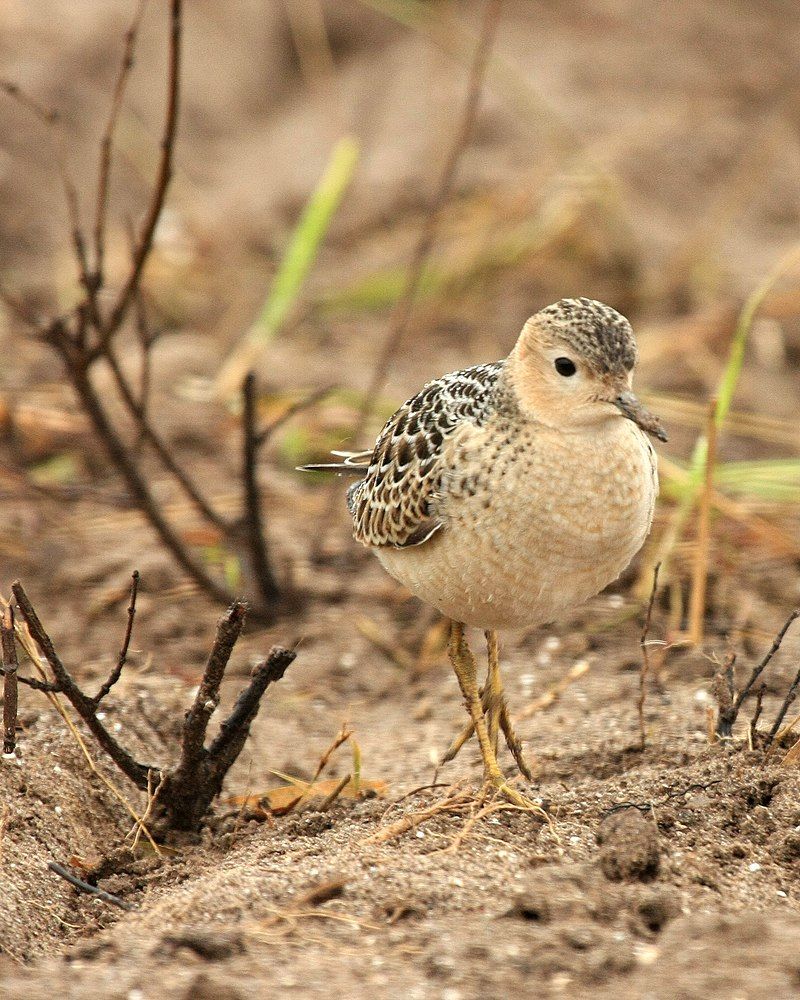
The buff-breasted sandpiper is a small shorebird that belongs to the calidrid sandpiper family. Its scientific name, subruficollis, is derived from two Latin words – subrufus, meaning “reddish”, and collis, meaning “necked” or “throated”.
This species is characterized by its reddish neck, which is why its scientific name refers to these particular features. These shorebirds are usually found near shorelines, searching for food such as aquatic invertebrates and insects.
They migrate to the northern regions in the summer and to the southern regions in the winter. The buff-breasted sandpiper is a relatively small species of shorebird, usually measuring around 16-17 centimeters in length. Its wingspan is usually around 25-30 centimeters.
Its most notable features are its reddish neck and its buff-colored chest. It has a short bill and a white eyebrow stripe. Its back is olive-brown, while its belly is white, and it has gray legs and feet.
| Kingdom | Animalia |
| Phylum | Chordata |
| Class | Aves |
| Order | Charadriiformes |
| Family | Scolopacidae |
| Genus | Calidris |
| Species | C. subruficollis |
15. Gray-Cheeked Thrush
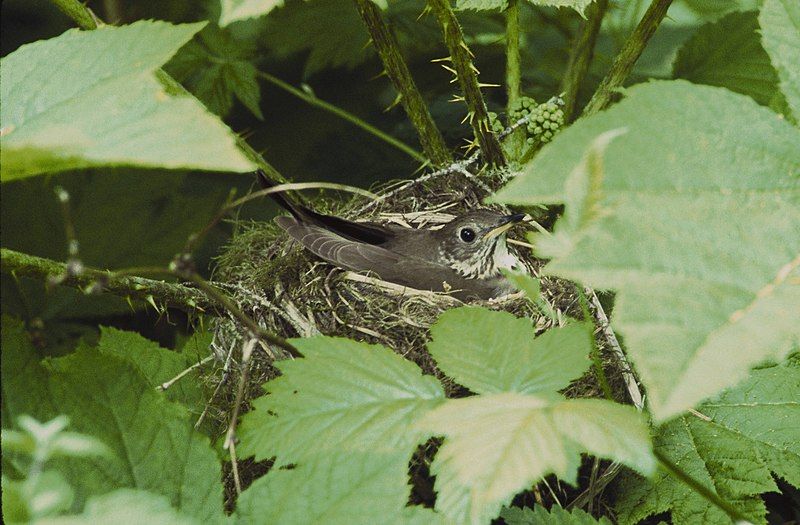
The grey-cheeked thrush is a species of medium-sized thrush found in the family Catharus. It measures 15-17 centimetres in length and is easily identified by its distinct white-dark-white patterned underwing.
This pattern is common to all thrushes in the Catharus family and is used to easily distinguish them from other species of thrush. The grey-cheeked thrush has a grey head and a brown back, and its wings and tail are brown with white highlights.
Its underside is pale grey with dark streaks. It has a distinctive white eye ring, and its bill is yellow with a black tip. In addition to its unique underwing pattern, the grey-cheeked thrush is also known for its melodious song.
It is a species of migratory thrush, breeding in the northern parts of North America and wintering in Central and South America. During the breeding season, the grey-cheeked thrush prefers to stay in dense woodlands near streams and wetlands.
It feeds mainly on insects, but also eats berries and other fruits. The grey-cheeked thrush is an important species, both ecologically and culturally. It is an indicator species of healthy forest ecosystems, and its song is a source of beauty and comfort for many people.
This species is currently listed as Least Concern by the International Union for Conservation of Nature.
| Kingdom | Animalia |
| Phylum | Chordata |
| Class | Aves |
| Order | Passeriformes |
| Family | Turdidae |
| Genus | Catharus |
| Species | C. minimus |
16. Olive-Sided Flycatcher
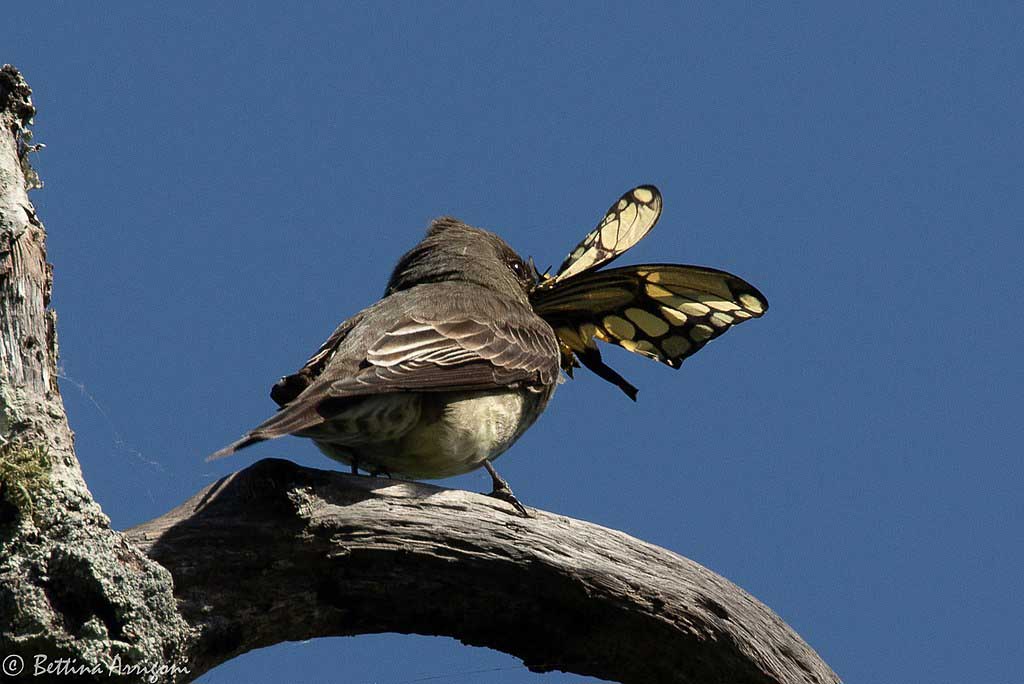
Source: Wikipedia
The olive-sided flycatcher is a small to medium-sized passerine bird that belongs to the Tyrannidae family, also known as the Tyrant flycatcher family. It is a migratory species, meaning that it moves from South America to North America during the summer to breed.
The bird is a very agile flyer and mainly consumes flying insects while in flight. This allows the bird to be able to catch prey in midair and avoid predators. It is also a very efficient hunter and is able to capture a large number of insects in a short amount of time.
The olive-sided flycatcher is an important part of the ecosystem in both South and North America, as it helps to keep the insect population in check.
| Kingdom | Animalia |
| Phylum | Chordata |
| Class | Aves |
| Order | Passeriformes |
| Family | Tyrannidae |
| Genus | Contopus |
| Species | C. cooperi |
17. Yellow Rail
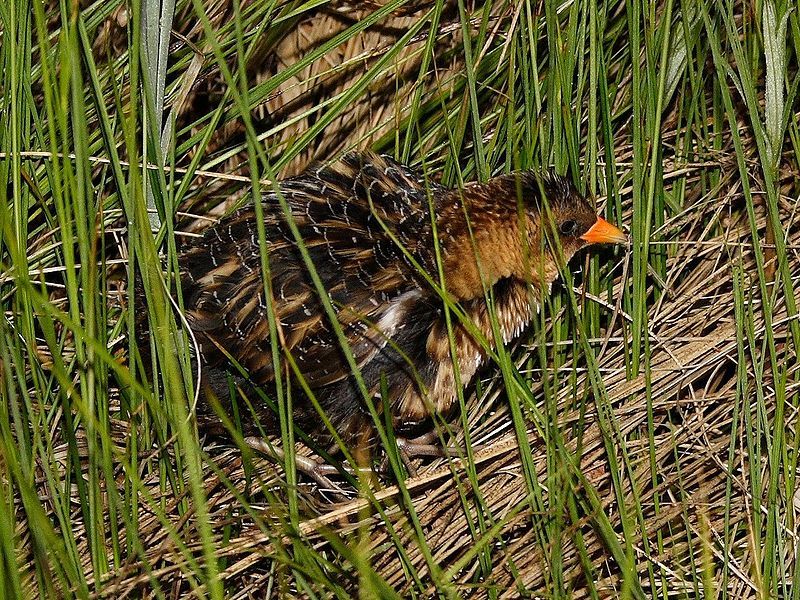
The yellow rail is a small bird that belongs to the family of Rallidae. It is found in various marshlands across North America and is known for its secretive nature.
It is a small bird, measuring between 6 to 8 inches in length, and has a yellowish-brown to grayish-brown colouration. It has a long slender bill, a slender body, and dark barring on its flanks and back.
Its habitat consists of marshes, wet meadows, and other wet areas, such as bogs and swamps. It prefers to stay close to dense vegetation, making it difficult to spot in the wild. It is an omnivore, and its diet consists of insects, larvae, worms, and other small invertebrates.
It is also known to eat seeds, leaves, and fruits. The yellow rail is an elusive bird, and it is rarely seen in the wild. This is due to its secretive behaviour and its preference for dense vegetation.
Its population is declining due to habitat destruction, and it is considered to be a species of special concern by the US Fish and Wildlife Service.
| Kingdom | Animalia |
| Phylum | Chordata |
| Class | Aves |
| Order | Gruiformes |
| Family | Rallidae |
| Genus | Coturnicops |
| Species | C. noveboracensis |
18. Harris’s Sparrow
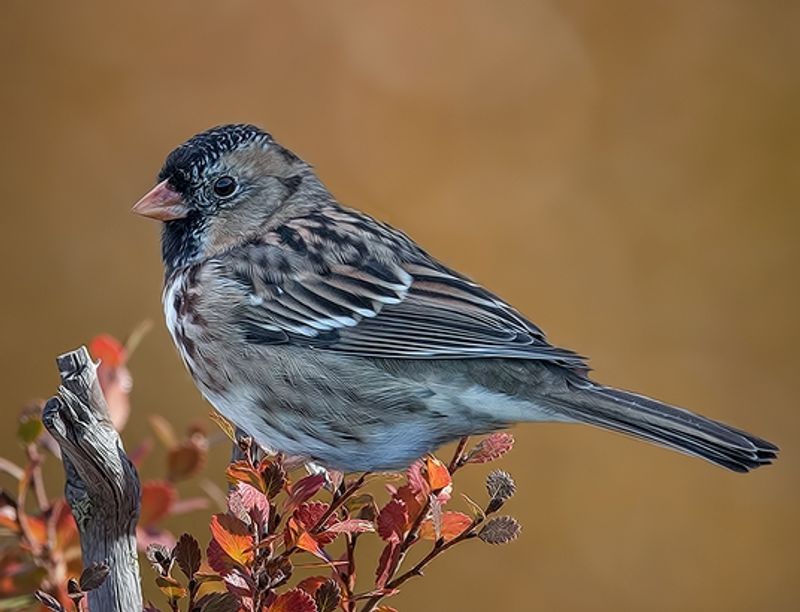
Harris’s sparrow is a species of bird native to Canada. It is a large sparrow, easily identifiable by its gray head, dark brown back, and white underparts. The species breeds in the northern parts of central Canada, making it the only bird species endemic to Canada.
During the winter months, Harris’s sparrows migrate south, to the Great Plains states of the United States, ranging from southern South Dakota to central Texas. This species of sparrow is known to inhabit grasslands, as well as agricultural fields and other open areas.
They feed mainly on seeds and insects and are known to form mixed flocks with other species such as the White-throated Sparrow and Vesper Sparrow.
Harris’s sparrows are an important part of Canada’s avian fauna, and their conservation is important for the preservation of Canada’s biodiversity.
| Kingdom | Animalia |
| Phylum | Chordata |
| Class | Aves |
| Order | Passeriformes |
| Family | Passerellidae |
| Genus | Zonotrichia |
| Species | Z. querula |
19. Thayer’s Gull
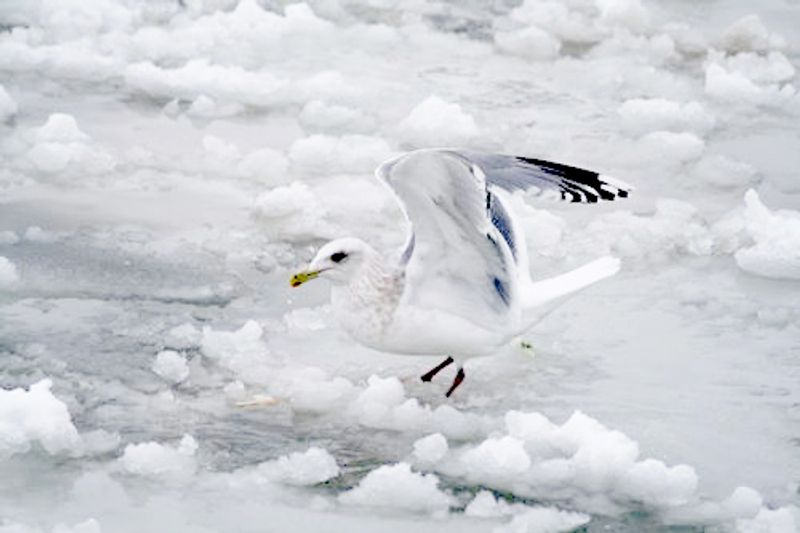
Thayer’s gull is a subspecies of the Iceland gull, which is a species of large gull native to the Arctic regions of Europe and North America.
The Thayer’s gull is particularly native to North America, where it can be found in Alaska and the coastal regions of Canada and the United States. It is a large gull, growing up to around 18 inches in length.
The plumage of the Thayer’s gull is very distinctive, with a light grey mantle and dark grey wings. It has a black head and white tail, and a distinctive black ring around its eye. Its bill is yellow, and it has yellow legs and feet.
The Thayer’s gull is an opportunistic feeder, scavenging for food on the shoreline, in grasslands, and in wetlands. It is also known to feed on insects, fish, and other small animals. The Thayer’s gull is a social creature, often forming large flocks in the winter months.
They nest in colonies, often in rocky or grassy areas, and lay their eggs in shallow depressions in the ground. The Thayer’s gull is an important species to conservationists, as it is a key indicator of the health of North American coastal ecosystems.
| Kingdom | Animalia |
| Phylum | Chordata |
| Class | Aves |
| Order | Charadriiformes |
| Family | Laridae |
| Genus | Larus |
| Species | L. glaucoides |
Conclusion
Birds in the Northwest Territories are incredibly diverse and can be found in many different habitats. They provide a valuable contribution to the local ecology and play an important role in keeping the environment healthy.
As the climate continues to change, it is essential that we take steps to protect and conserve birds in the Northwest Territories so that they can continue to thrive.